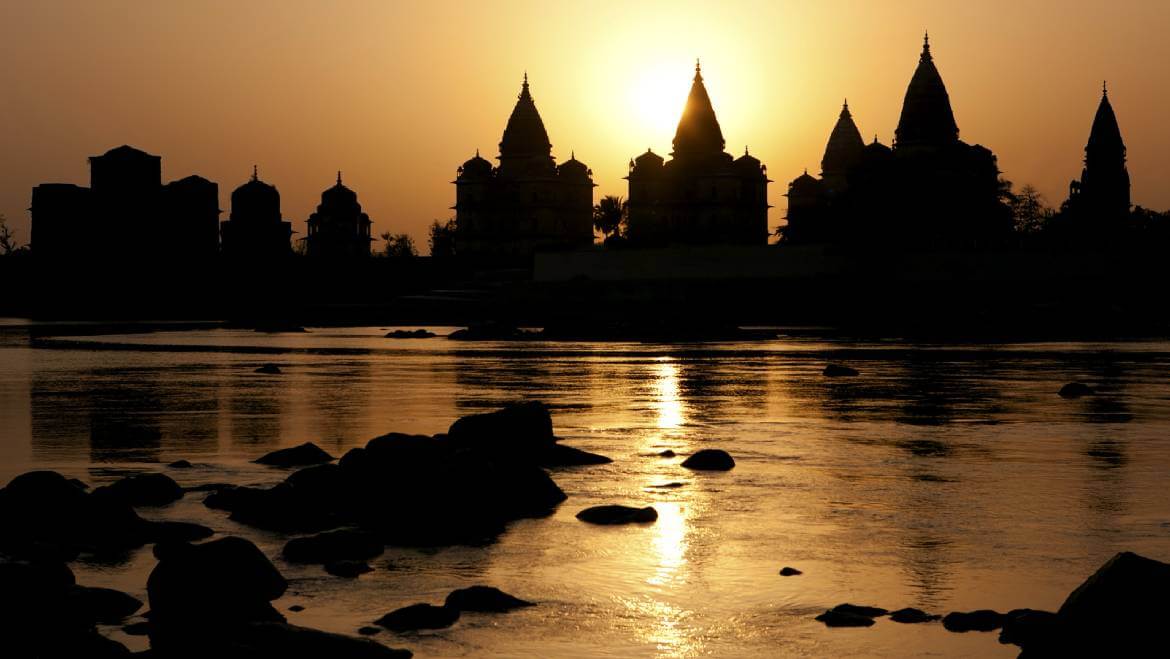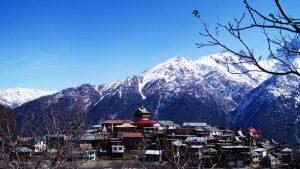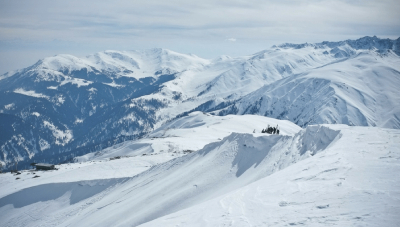The wide and varied region of Central India is home to a diversity of experiences just waiting to be explored. This charming location is conveniently located away in the geographic heart of the Indian subcontinent and is a symbol of natural splendour, culture, and history. In simple words, the centre of India is gentle and magical, covering the ancient temples and magnificent forts, where the forests and jungles are alive with wildlife and bounded by the country’s most dynamic and ancient cities.
It is home to both the natural world and cultural treasures, as well as both modernisation and ancient traditions. Regardless of whether one enjoys the beauty of nature, a history nerd, or a thrill-seeking adventurer, Central India has a tonne to offer to its visitors. One may reach the heart of India by taking the most prominent tourist routes through Central India alongside the Narmada River, which is also home to several historical monuments, a variety of national parks, and a rural lifestyle.
Let’s discover Central India’s alluring locations and the countless treasures they have to offer. Below are the 10 must visit places while travelling to Central India.
- Khajuraho
- Kanha National Park
- Sanchi
- Gwalior
- Amarkantak
- Jabalpur
- Bandhavgarh National Park
- Orchha
- Ujjain
- Pachmarhi
Also Check Out: Best of India Tour Packages
Khajuraho – Spiritual town of ancient temples
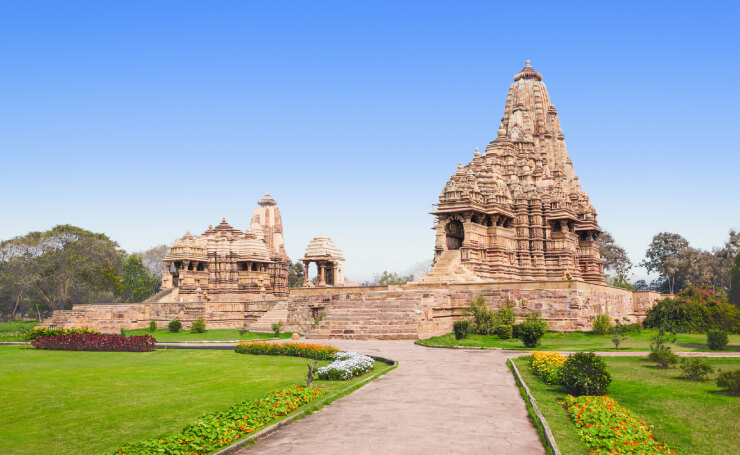
India’s Madhya Pradesh state contains a little town of Khajuraho in the Chhatarpur district. well-known for the beautiful collections of temples generally referred to as the Khajuraho Group of Monuments. These temples are renowned for their elaborate and beautiful sculptures and are a UNESCO World Heritage Site. The Hindu and Jain temples that make up the Khajuraho Group of Monuments were constructed between the ninth and eleventh centuries under the Chandela dynasty. According to historical records, there were 85 temples at the site scattered across 20 square kilometers by the 12th century. Now roughly 25 of these temples scattered over a six-kilometer area have survived. The Kandariya Mahadeva Temple is one of the few remaining temples and is embellished with a plethora of sculptures that display the fine intricacies, symbolism, and expressiveness of traditional Indian art.
These temples are distinguished by their fine architectural detail, beautiful sculptures, and intricate carvings. They adhere to the North Indian architectural style known as ‘Nagara’. Both inside and out, each temple features elaborate carvings that portray themes from Hindu Mythology, ordinary lifestyles, and sensual symbolism. The use of erotic sculptures distinguishes Khajuraho from other Indian structures of temples. One distinctive aspect of some of the temples is their representation of dedicated art of lovemaking. They are thought to represent several concepts in life, such as spiritual awakening and the appreciation of human emotions. The temples display superb craftsmanship and artistic talent.
A collection of Jain temples can be seen in Khajuraho in addition to the Hindu temples. These temples are renowned for their calm, subtle beauty, which features fine carvings of Jain Tirthankaras. The cultural festival which involves classical Indian dance performances amid the settings of the temples is held every year in this town typically happening in the month of February.
Popular sightseeing locations/ Tourist Attractions
- The Kandariya Mahadev Temple
- Lakshmana Temple
- Vishvanatha Temple
- Chitragupta Temple
- Ken Gharial Sanctuary
- Raneh falls
- Panna National Park
- Ajaygarh Fort
Kanha National Park – The Realm of Jungle Book
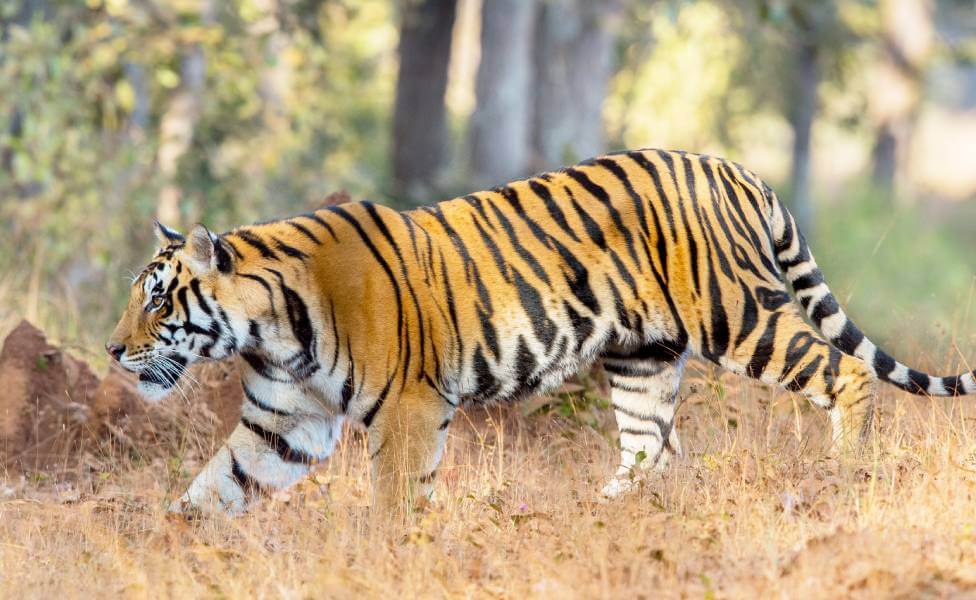
Kanha National Park, the largest national park in Central India and one of the greatest parks in Asia, is situated in the Maikal hills of the Satpura range, within the central Madhya Pradesh area. The Royal Bengal tiger is one of the 22 species of big animals and a significant attraction. The current territory, one of India’s greatest tiger reserves, spans a 940-kilometer square and is split into two sanctuaries: Hallon and Banjar. The three entering gates of Kanha are Sarhi, Mukki, and Khatia (Kisli). Khatia and Sarhi are reachable from Jabalpur. The south zone while Mukki is easily accessible from Nagpur or Raipur. During the visit to this National Park, visitors can see the actual sites from the award-winning documentary “Land of the Tigers”.
Since its establishment in 1955, the park has actively helped to preserve several endangered species. In 1974, the park was included in Project Tiger Reserve to increase the population of Tigers. Also famous for the original Barasingha initiatives aimed at saving extinct species. This National Park, one of Asia’s most beautiful wildlife reserves today, gained international recognition as a result of Rudyard Kipling’s novel The Jungle Book.
The National Park is world-renowned for its animal safaris which draws visitors from all over the world every year. Kanha is famous for having a wide variety of plants and animals. Rich Sal and mixed deciduous woods, meadows, and grassy plateaus characterise the park’s region. Leopards, wild dogs, wild cats, foxes, sloth bears, hyenas, langurs, wild boars, and jackals are some of the other notable wildlife in this park. This is also home to reptiles including pythons, cobras, Indian kraits, and other kinds of snakes.
Popular sightseeing locations/ Tourist Attractions
- Bamni Dadar, a sunset point
- Mukki jeep safaris to spot Tiger
- Kanha Museum
- Mandla
- Kawardha Palace
Sanchi – The Buddhist Town Of Stupas
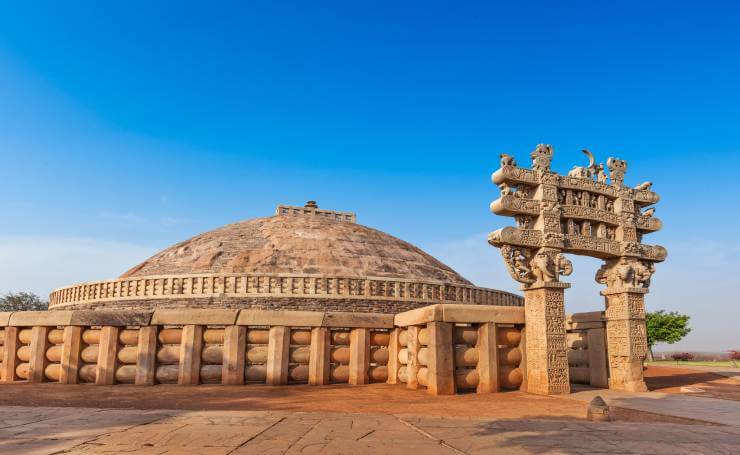
The Buddhist monument of Sanchi, located in Madhya Pradesh, is one of India’s oldest stone structures. Emperor Ashoka of the Mauryan Dynasty constructed the Great Stupa, which is now a UNESCO World Heritage Site. The buildings and sculptures there are excellent examples of how Madhya Pradesh’s Buddhist art and architecture developed. The stupa is located at Sanchi, which is 46 kilometers from the city of Bhopal. The huge hemispherical dome, which stands more than 50 feet tall and has a circumference of more than 30 meters, was built to commemorate Lord Buddha and contains several significant Buddhist artifacts.
The stupa was increased in size and embellished with artistically carved railings, stairways, and harmika on the top under the rule of the Sunga Dynasty. Four exquisitely carved entrances that enhanced the stupa’s magnificence were given to it by the Satavahana rulers in the first century BC. These gates’ carvings, which represent the scenes from the early life of Buddha, his seven incarnations, and the contemporary Jataka stories, serve as a monument to traditional Buddhist art. One may also see a piece of the renowned “Ashoka Pillar”, which was built in the third century BC next to the stupa. After the Gupta empire fell, the Buddhist kingdom of Sanchi was abandoned for many years before being rediscovered in 1818 by British General Mark Taylor. From 1912 to 1919, this ancient city underwent restoration. A museum showing the items discovered during the excavation of the area has been set up here by the Indian Archeological Society. The “Ashoka Pillar” crown, with its four lions lying back to back, is the main attraction of this museum.
The Ashoka Pillar, Toranas, elegant gates with varied carvings, and other remains of the historical Buddhist civilisation that date back to the third century B.C. are among Sanchi’s most well-known landmarks and considered as a significant heritage tourist destination, where people from all over the world come here to cherish this Buddhist Pilgrimage site.
Popular sightseeing locations/ Tourist Attractions
- Sanchi Stupa
- The Great Bowl
- Ashok Pillar
- The Eastern Gateway
- Udayagiri Caves
- Sanchi Museum
Gwalior – A Town of History & Royalty
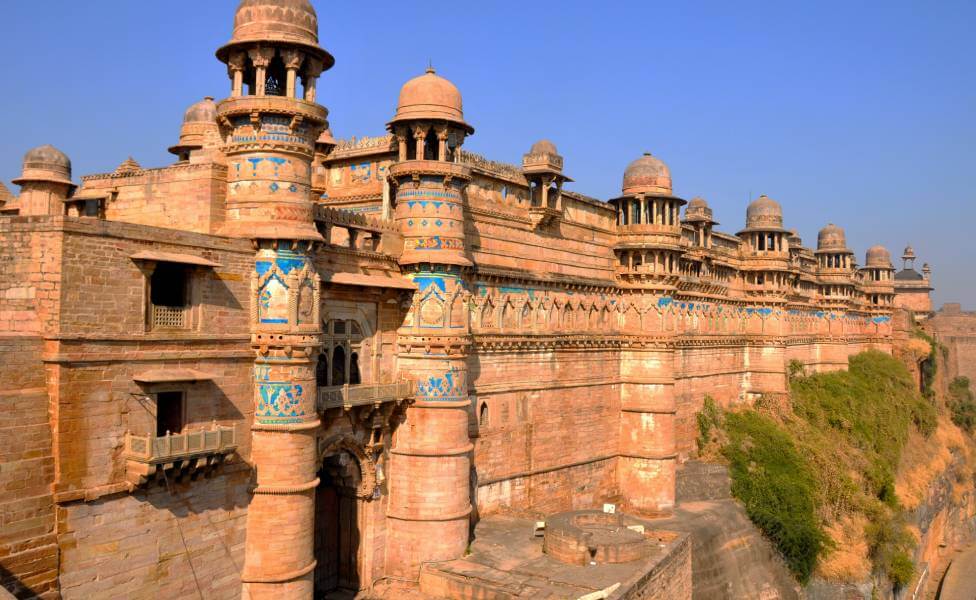
Gwalior is a historic city located in the Indian state of Madhya Pradesh. Popular due to its hilltop fort, Gwalior is home to several palaces and magnificent temples that give the city a majestic beauty and reveal much about its great history. The city has experienced the control of several Rajputana kings who lived in Gwalior and constructed several forts and palaces while in power. The British Raj granted Gwalior the title of a princely city before independence, which adds to the city’s historic appeal. The ancient city was built by King Suraj Sen and also was home to some of India’s most distinguished aristocracy. Aside from that, the city is home to memorials honouring historical freedom warriors like Tatya Tope and the persistent Rani of Jhansi.
The biggest carpet in the world, which took approximately 12 years to weave, and two of the largest chandeliers in the world, each weighing close to 3.5 tonnes can be seen in Jal Vilas Palace. Tansen’s mausoleum, which is also a significant location in Gwalior, is where the legendary Indian musician Tansen was born. Every year, in November or December, the city hosts the four-day Tansen Music Festival, when classical artists from all over the nation perform close to the tomb itself. While staying in the city one can see different monuments and museums, indulge in regional specialties like namkeen, kebabs, and poha, and go boating in Tighra Dam.
Tourists interested in learning about India’s regal past should visit this place, as Gwalior comes among the top places to visit in central India as it is an intriguing destination thanks to its combination of history, culture, and architecture. Each cultural site in Gwalior has a unique and intriguing history that will transport one to the time of the Maharajas and Maharanis. One can experience the splendour of medieval forts there, enjoy the glory of classical music, and learn about the dynastic legacies that have shaped this historic city.
Popular sightseeing locations/ Tourist Attractions
- Gwalior Fort
- Jal Vilas Fort
- Man Singh Palace
- Tomb of Tansen
- Gujari Mahal (State Archaeological Museum)
- Teli Ka Mandir
Amarkantak – Source of River Narmada
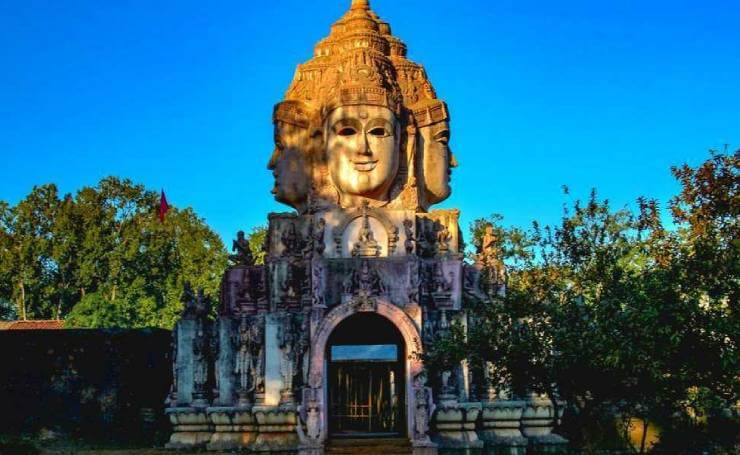
One of the important destinations to visit in Madhya Pradesh is Amarkantak, which is located 159 kilometers away from Kanha National Park. The word “Amarkantak” in Sanskrit means “eternal source” & a well-known Hindu pilgrimage site that is often referred to as “Teerthraj” or “The King of Pilgrimages”. The city is renowned for its geographical and ecological diversity in addition to its spiritual significance. Amarkantak, a town on the hills with a height of 1065 meters, is home to some of the most gorgeous temples one will ever see.
Amarkantak is the source of the Narmada River, one of India’s Holy Rivers, making it a unique location. Amarkantak serves as a meeting location for the rivers Narmada, Sone, and Johila in addition to being the genesis of the river Narmada. The Vindhya and Satpura Ranges converge here, with the Maikal hills being the most notable among them. There is a historic Lord Shiva temple nearby known as the Pataleshwar Mahadev Temple by the locals, which is said to have been built during the rule of the Kalchuri Dynasty. One of the famous temples is the Narmada Udgam Temple which honors the river’s origin.
Amarkantak is very valuable ecologically since the woodlands around it are home to a wide range of plants with therapeutic qualities. Sant Kabir, a spiritual poet, is said to have meditated on the Kabir Chabutra here. The best time to visit Amarkantak is from September through February. After rainy weather, the surroundings get greener, making them lovely to visit. Wintertime sees enthusiastic celebrations of Shiv Chaturdashi, Makar Sankranti, and Narmada Jayanti. Every year, thousands of tourists go to Amarkantak to pay their respects at these historic temples and take in the tranquil ambiance while enjoying the ideal relaxed weekend with family and friends.
Popular sightseeing locations/ Tourist Attractions
- Dugdh Dhara Falls
- Kabir Kothi
- Pataleshwar Mahadev Temple
- Narmada Kund
- Trimukhi Temple
- Kapil Dhara
Jabalpur – City of Marble Rocks & Waterfalls
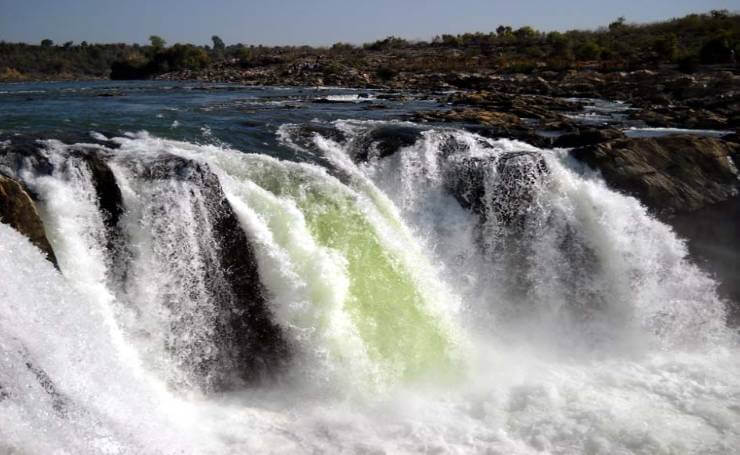
One of the beautiful destinations in Madhya Pradesh is Jabalpur which is 164 kilometers away from Kanha National Park. The Arabic word “Jabal”, which means “mountain”, and the Sanskrit word “Pura”, which means “city”, combine to form the name “Jabalpur”. Jabalpur is considered to be the tapasya bhumi of the sage Jabali, and the name of the city is named after him. This old city, which is located along the banks of the River Narmada, is renowned for its breathtaking beauty. Formerly mostly known as an industrial city, but is currently becoming a more and more well-known tourist destination because it is encircled by sandstone and granite hills, and is known around the globe for its white marble rocks. The majestic marble mountains’ shifting hues and the Narmada River fascinate tourists on a moonlight night. It is truly a thrilling and enlightening experience to encounter.
The 98-foot-tall Dhuandhar Falls are located in Bhedaghat, a top tourist destination in central India, where one can see the marble rocks up close while sitting on a boat or cable car ride. This waterfall’s flowing and foggy scenery is wonderful to witness. The area is also home to several ancient forts and museums.
It is a lively city with modernised services, and home to a diverse working-class population, British-style buildings, and stunning natural scenery. Jabalpur is a good starting point to visit Kanha National Park and Bandhavgarh National Park because they are both close by. There are a ton of spiritual attractions which include Chausath Yogini Temple, which dates back to thousand years, the Gwarighat Gurudwara on the river’s edge, the Kanchnar Temple, which has a 76-foot-tall statue of Lord Shiva, and other places. The combination of all these attractions makes Jabalpur, Madhya Pradesh’s third-largest city, a fascinating location to visit.
Popular sightseeing locations/ Tourist Attractions
- Dumna Nature Reserve
- Dhuandhar Falls
- Bhedaghat Marble Rocks
- Madan Mahal Fort
- Balancing Rock
- Chausath Yogini Temple
- Bargi Dam
Bandhavgarh National Park – Wildlife Paradise
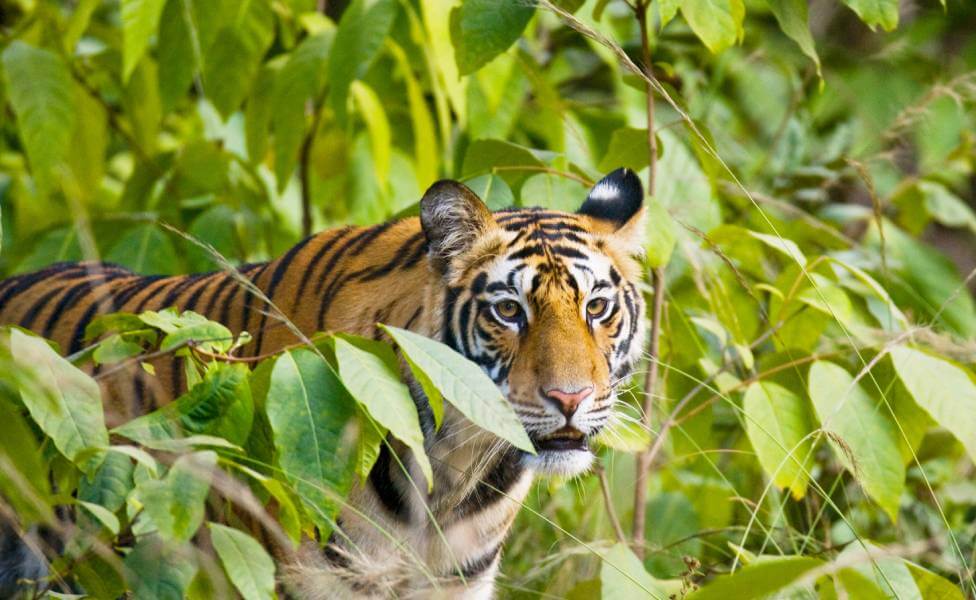
The Madhya Pradesh Vindhya highlands are home to Bandhavgarh National Park. Specifically, residing in the Umaria district of Madhya Pradesh, Central India. The National Park has a main area of 105 square kilometers and a buffer zone of around 400 square kilometers. The entire region has a variety of geographical features, including high mountains, undulating forest habitats, and wide meadows. The Bandhavgarh National Park is well-known for being home to the Royal Bengal Tigers. The greatest known tiger population density in both India and the whole world is found at Bandhavgarh. Twelve natural waterholes, several artificial streams, several historical monuments, and the ruins of old caves that date back to two thousand years can be found in this park.
The national park was once the Maharaja of Rewa’s hunting preserve and is now a well-known natural gathering place for White Tigers. The first White Tiger was found in Rewa and is now a popular attraction in zoos all over the world. Additionally, it is said that Bandhavgarh is the ancestral home of all tigers in the world.
The topography is uneven here with rocky hill ranges approximately running east and west along with green wetlands and woodland valleys spread around. All wildlife enthusiasts should visit this national park since this is one of the best places to visit in Central India for tiger sightings. There were between 44 to 49 tigers residing in the park in 2012 and now sheltering more than 75 tigers. There are 250 different species of birds and more than 22 different kinds of animals living in the park. The park is named after the neighbouring Bandhavgarh fort, which rests on 800-meter-high cliffs. Trekking through these paths is worthwhile since it offers plenty of views of the surroundings. Jeep safaris are among the most well-liked tourist activities.
Popular sightseeing locations/ Tourist Attractions
- Bandhavgarh Hill
- Shesh Saiya
- Bandhavgarh Ancient Caves
- Panpatha Wildlife Sanctuary
- Climber’s Point
- Baghel Museum
- Malaya
Orchha – Souvenirs from The Past
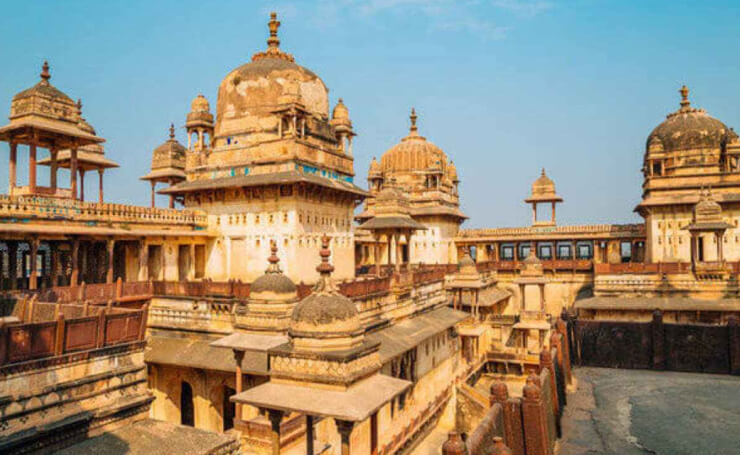
In Madhya Pradesh, Orchha is a medieval town famed for its luxurious palaces, finely carved temples, and extensive collection of folklore. It is situated by the Betwa River and interestingly the meaning of Orchha in Sanskrit means “a hidden place”. This city of palaces is well-known for its classical architecture, mural paintings, and Chhatris (cenotaphs) that were built to honour the Bundela emperors. Rudra Pratap Singh, a king of the Bundelkhand kingdom, founded Orchha as its capital in 1501 AD. Subsequent kings also held authority in Orchha. although, it’s interesting to take into consideration that the Betwa breaks into the seven Satdhara channels at this point. According to legend, this is done in homage to the seven former kings of Orchha.
Tourists from all over the world are enchanted by Orchha’s old-world charm. Also popularly known as Raja Ram’s Kingdom, this small, rural community may be the only spot in the nation where Lord Rama is honoured as a beloved ruler instead of just a deity. Photographers and travel enthusiasts will enjoy the stunning medieval architecture of Orchha’s palaces and temples. Orchha dates back to the 16th century and has a stunning fusion of Mughal and Rajput architecture, also was the centre of numerous illustrious royal dynasties for about 300 years.
The Orchha Fort Complex lies in the centre of Orchha’s legacy. This complex is an arrangement of palaces, forts, and temples, located on an island in the Betwa. The fort, which is divided into Raj Mahal, Jahangir Mahal, and Sheesh Mahal, conceals inside its walls hidden tunnels. And opulent royal residences.
Popular sightseeing locations/ Tourist Attractions
- Chaturbhuj Temple
- Raja Mahal (Orchha Fort)
- Ram Raja Temple
- Jehangir Mahal
- Chattris (Cenotaphs)
- Phool Bagh
- Lakshmi Narayan Temple
Ujjain – Spiritual Splendour of Temples and Shrines
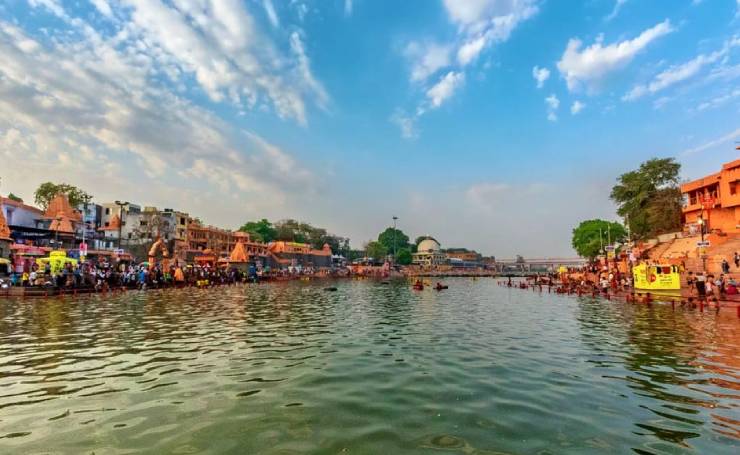
In Madhya Pradesh’s Malwa area, on the eastern bank of the Kshipra River, sits the ancient city of Ujjain, which is regarded as one of the holiest places in all of India. The Kumbh Mela, the world’s greatest gathering, where the devotees freed their souls by taking a bath in the Holy River. The festival is celebrated in four different locations, with Ujjain being one of them. Ujjain, along with Haridwar, Nashik, and Prayag, are the four locations where Amrita, the elixir of immortality, is said to have mistakenly spilled while being carried away by the heavenly bird Garuda during the Samudra Manthan. For Shaivites, Vaishnavities, and Shaktaas, Ujjain remains a significant site of pilgrimage destination in central India.
Numerous Hindu and Jain temples can be seen all across, and the city of Ujjain gives the area a holy feel. The city gives a glimpse into the past in addition to the temples, and it is worthwhile to visit ancient sites to observe the Hindus’ customary prayer rituals and other practices. As one of the seven pilgrimage sites for the Hindu religion, Ujjain is hence a key location for religious attraction. The Mahakaleshwar Jyotirlinga, one of Shiva’s twelve Jyotirlinga temples, is also located there. Ujjain, one of the most important towns in ancient India, served as many Indian intellectuals’ primary location of learning. Due to its immense riches in terms of religion, architecture, and educational value, Ujjain is a popular tourist destination for visitors from all over the world.
For a significant portion of its history, Ujjain was the most important city in central India as around 600 BCE, it started to become the political hub. It served as the powerful seat of one of the sixteen Mahajanapadas, the ancient Avanti monarchy. When Raja Scindia founded his headquarters at Ujjain in 1731, the city for a brief period in the 18th century served as Scindia state’s administrative centre inside the Maratha Empire.
Popular sightseeing locations/ Tourist Attractions
- Kal Bhairava Temple
- Ram Mandir Temple
- Mahakaleshwar Jyotirlinga
- Kumbh Mela
- ISKCON Ujjain Temple
- Jantar Mantar, Ujjain
Pachmarhi – The Jewel of Satpura
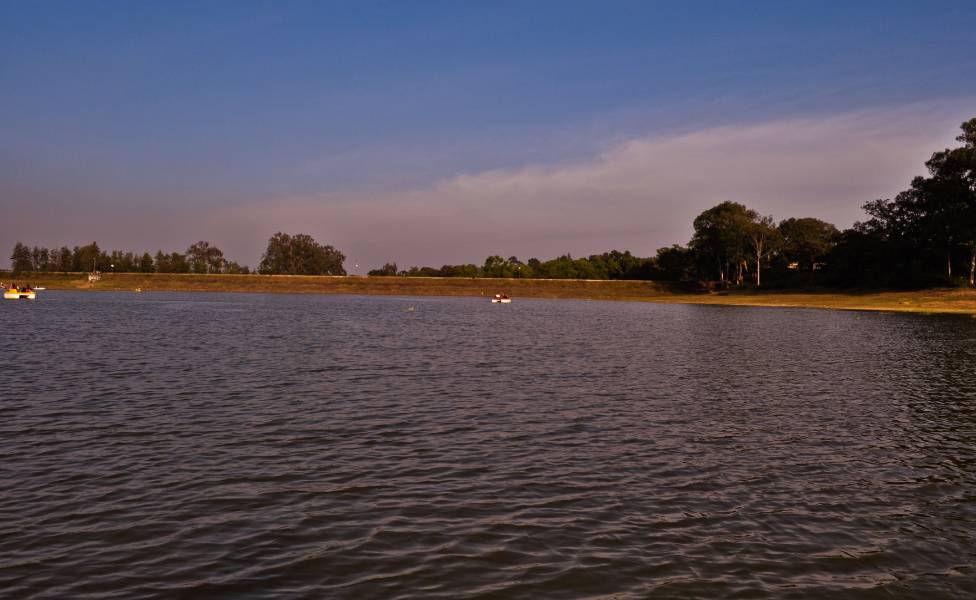
Pachmarhi, the only hill town in Madhya Pradesh, lures its visitors to explore the picturesque views of mountains, waterfalls, valleys, forests, and the famous five caves. This hill station, located in the Satpura range, provides several possibilities to unwind in its peaceful surroundings. Visitors are drawn to the well-known cave shelters at Mahadeo Hills in Pachmarhi. In addition to the distinctive array, many wild flora and fauna are also found in the forests of Pachmarhi. The “Queen of Satpura Range” or “Satpura ki Rani” are the other names for Pachmarhi as it is located at an elevation of 1,067 meters, and is also home to leopards and bison.
Pachmarhi is a popular tourist destination all around the year because of its comfortable climate and captivating scenery. It is a well-liked destination for spiritual visitors since five sandstone-cut caves on the summit are thought to represent the location where the Pandavas lived in Pachmarhi during their exile.
Bhonsale Kings ruled over the Pachmarhi area before the Marathas. In the 18th century, Sena Saheb Subha Maharaj Raghuji Raje Bhonsale brought it under Maratha rule. The Gond Bhagvat Singh dynasty ruled over the Pachmarhi region before the arrival of the British, however, it was not an inhabited village or town at that time. Later Captain James Forsyth established this charming Victorian hill town in 1857. It is home to numerous lovely British homes, some of which have been converted into small neighbourhood guesthouses, as well as one of the best colonial churches in the nation, constructed of sandstone and terracotta tiles with a towering spire and excellent stained glass window. Pachmarhi is more preferably visited by visitors during the summer and monsoon months and has been designated as a UNESCO Biosphere Reserve and it thus contributes to the Madhya Pradesh tourism.
Popular sightseeing locations/ Tourist Attractions
- Bee Falls
- Jata Shankar Caves
- Dhoopgarh
- Handi Khoh
- Pandava Caves
- Satpura National Park
- Duchess Falls
Central India is a place where the past and present collide, where the majesty of nature coexists with ethnic diversity, and where every street corner has a tale to tell. Central India welcomes you with open arms whether one is exploring for wild adventure, peace in the hilltops, or a peek into India’s rich history. To experience an amazing journey through the heart of India, one should explore its variety of landscapes, and immerse oneself in its colourful culture.
Other Interesting Blogs to Read
Like & Follow our social media accounts at Twitter, Facebook, Linkedin & Instagram for getting the latest updates & offers on holiday packages.
Disclaimer: We do not take credit for some of the licenced paid images used in our blogs, whether from Google Images, Fotolia & Shutterstock. All such images are the copyrights of their respective owners and we try to provide credit for them wherever we can. If, however, any copyright image has been used on our blog, the concerned person can either mail us directly to remove the image or provide credit to whomsoever the image may belong to.
Frequently Asked Questions
What are the top heritage attractions to visit in Central India?
The top heritage attractions to visit in Central India include the Stupas of the Sanchi and the Khajuraho Group of monuments as they come under the title of UNESCO World Heritage Sites as they showcase the artistic brilliance and spiritual depth of ancient India.
What are the top national parks to visit in central India?
The top national parks to visit in central India include Kanha National Park, Bandhavgarh National Park, Panna National Park, and Satpura National Park as these parks are best for jeep safaris and are very rich in flora and fauna.
What are the top religious places to visit in central India?
The top religious places to visit in central India include Khajuraho, Amarkantak, Orchha, and Ujjain. Tourists and devotees visit these places to feel the presence of serenity and calmness.
What are the popular must-see festivals in Central India?
The popular must-see festivals in central India include the Kumbh Mela festival, along with the cultural festival of classical dance in Khajuraho and the Tansen Music Festival in Gwalior.
What is the best time to visit central India?
The winter season, which lasts from October to March, is the ideal time to travel to central India. The days are warm and energising, and the weather is mild and pleasant, creating the ideal setting for seeing the city’s ancient monuments and other tourist attractions.
About the author
Moumita Kundu is a dedicated writer and researcher covering topics related to travel, eco-friendly behavior, and sustainable living. She has turned her travel dreams into reality by penning travel blogs. Moumita writes with a creative flair, allowing her to share her insights and experiences. Beyond her talent as a writer, she harbors a genuine love for animals and those around her.

 +91-9212777225
+91-9212777225 Plan Your trip
Plan Your trip